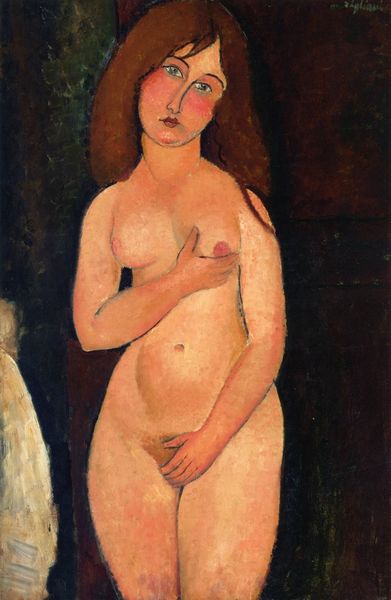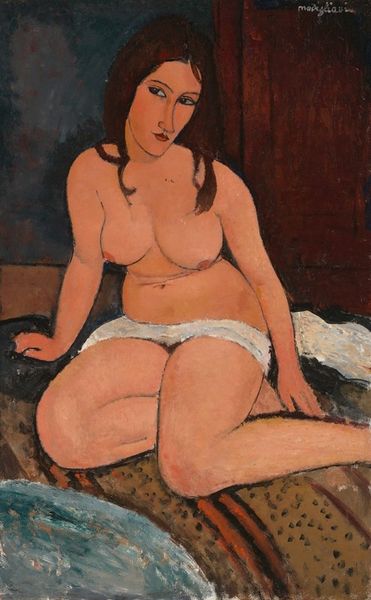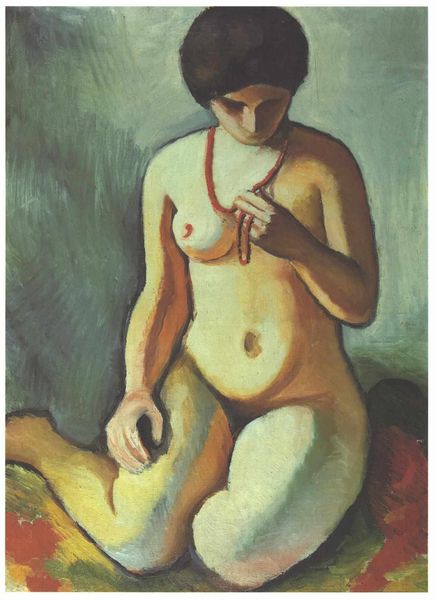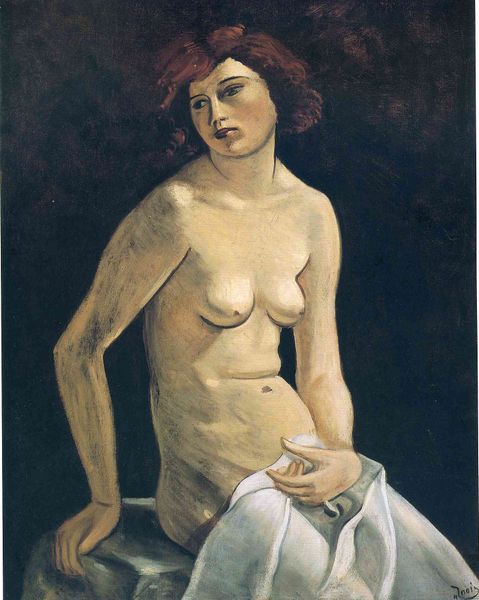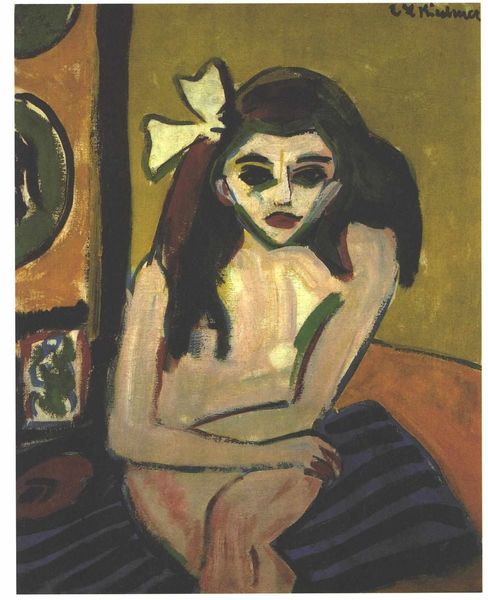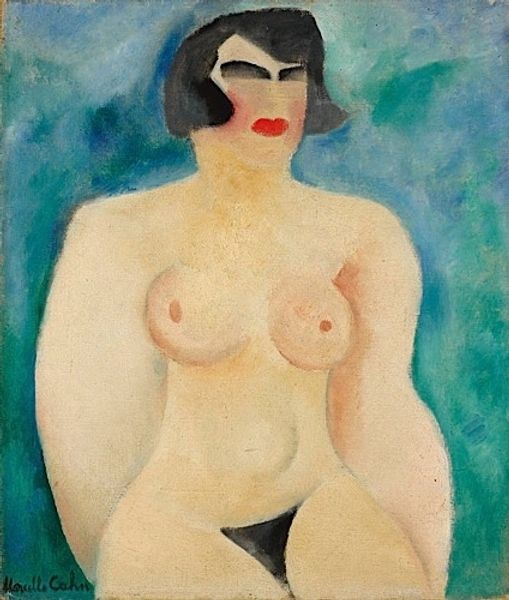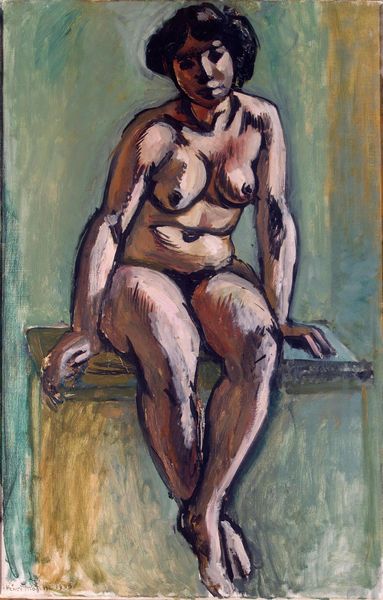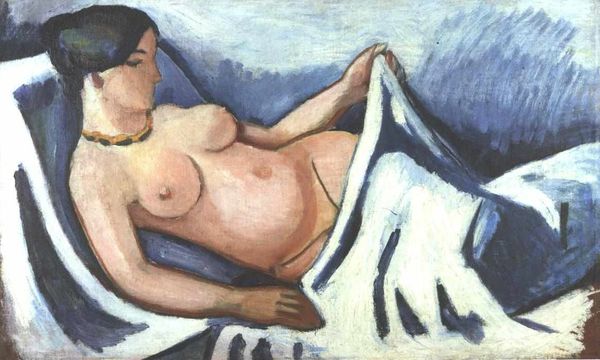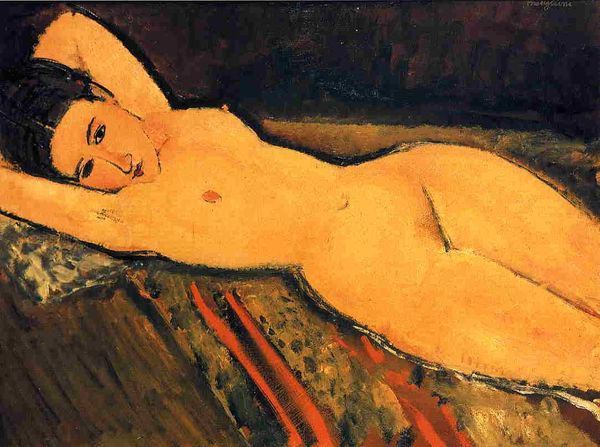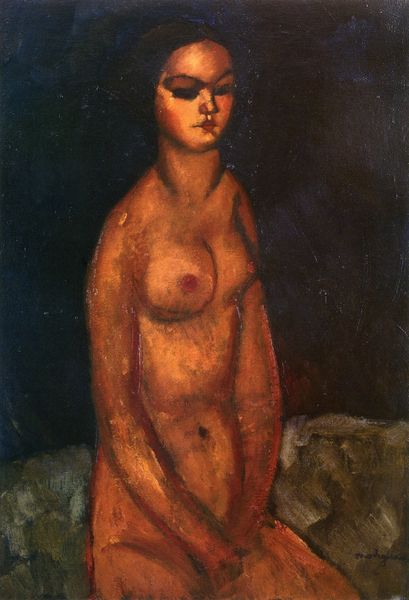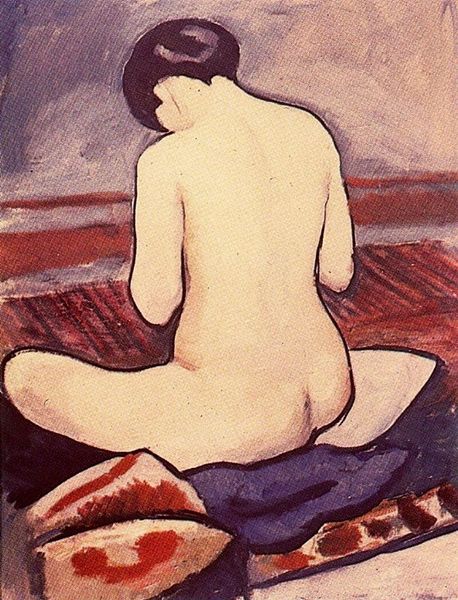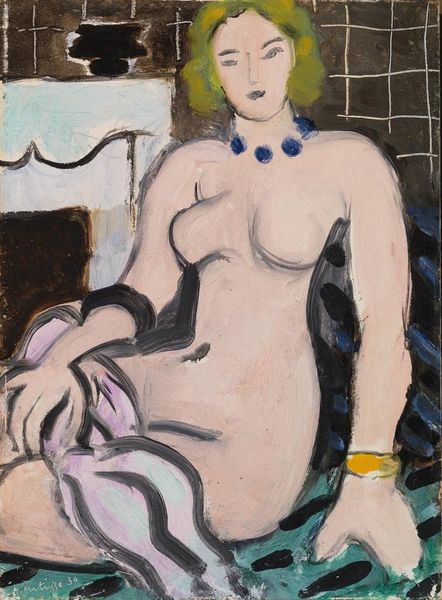
painting, oil-paint
#
portrait
#
painting
#
oil-paint
#
figuration
#
female-nude
#
intimism
#
expressionism
#
portrait drawing
#
nude
#
portrait art
Copyright: Public domain
Editor: Here we have August Macke’s “Female nude at a knitted carpet,” an oil painting. There's a striking contrast between the flatness of the knitted carpet and the three-dimensionality of the figure. It gives a sense of intimacy. What's your interpretation of this work? Curator: Looking at the material context, this painting exemplifies Macke's experimentation with domestic space and the female form within a rapidly industrializing society. How does the "knitted carpet" itself, as a manufactured object, inform our reading of the nude? Is it a sign of encroaching mass production altering traditional artistic subjects? Editor: That's an interesting angle. I was mainly focused on the contrast, the textures... the intimacy. Curator: The texture and the medium are crucial, aren't they? Oil paint, with its history tied to wealth and status, is used to depict a domestic scene involving mass-produced textiles. The carpet, a product of possibly exploitative labor, becomes a stage for the artist's exploration of form and color. Consider who would be purchasing these items – or making the carpets themselves. Editor: So you are saying the painting hints at social class and the process of how materials and objects find their place in homes and in art? Curator: Precisely. Macke uses the familiar setting to question our relationship with material culture and the female body, and oil paints as material contribute to these notions. Editor: I never thought about the carpet in that way! I focused so much on just the visual. Curator: Exactly, that is the first step. It’s always enriching to delve into how the piece came to exist, in its time, to unlock other doors of thinking. Editor: It definitely changes my perspective. I will now see works beyond the mere expression, digging into how they came about and their relation to labour.
Comments
No comments
Be the first to comment and join the conversation on the ultimate creative platform.
